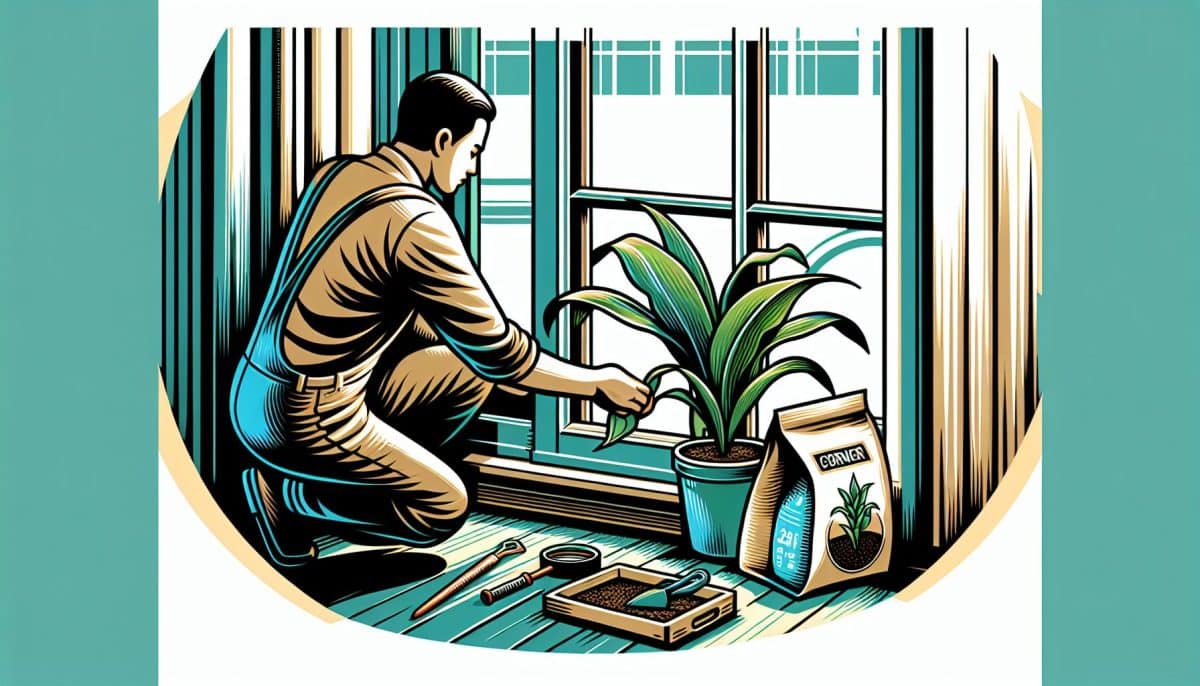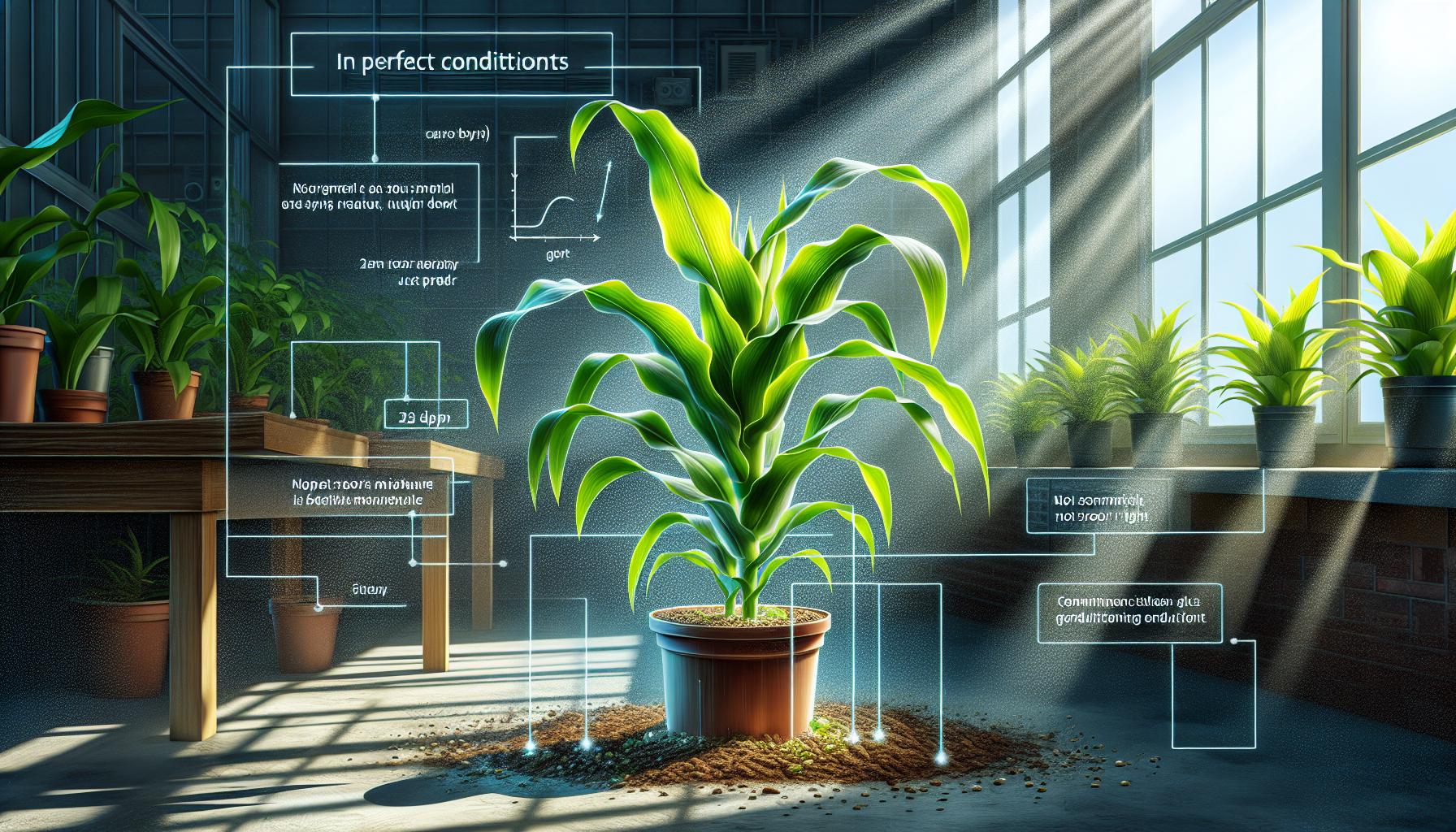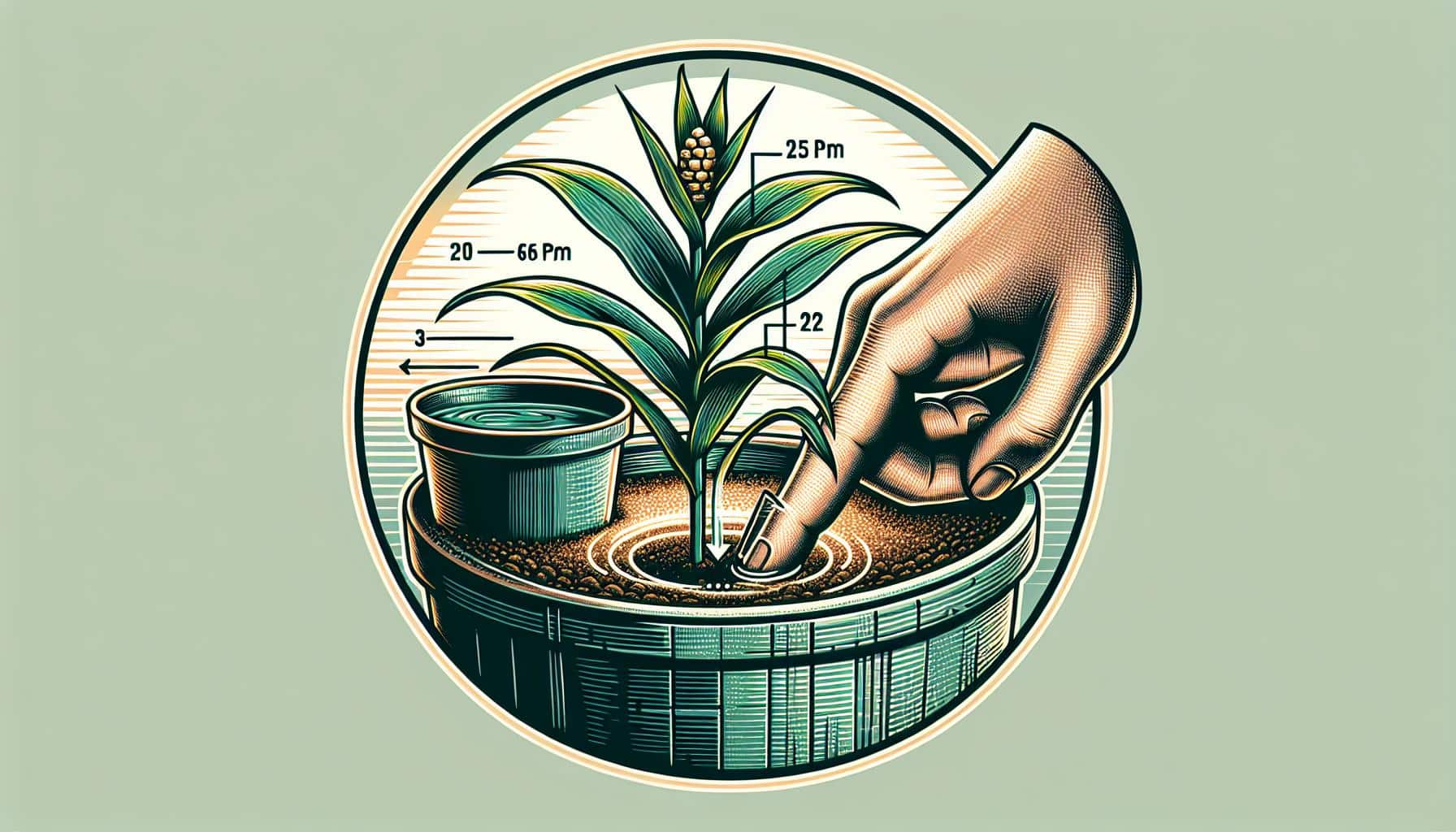
Watching your corn plant wilt and wither can be disheartening, especially when you’re not sure what’s gone wrong. But don’t lose hope just yet! With the right care, you can often revive a struggling corn plant and bring it back to its former glory.
Understanding the signs of distress is key to saving your plant. Yellowing leaves, stunted growth, or a limp posture are cries for help. It’s time to troubleshoot and take action. Ready to turn things around? Let’s jump into the rescue mission for your corn plant.
Identifying signs of distress in a corn plant
Being able to spot the early signs of trouble in your corn plant can mean the difference between revival and replacement. Yellowing leaves often indicate that something isn’t quite right. This discoloration could be due to overwatering or a nutrient deficiency. Similarly, if you notice stunted growth, it might be because your plant isn’t receiving enough sunlight or it’s root-bound and requires repotting.
Taking a closer look at the posture of your corn plant can also reveal underlying issues. A limp posture suggests that your plant is either getting too much or too little water. Consistency is key for water and nutrient delivery, and an erratic schedule can lead to a droopy appearance. Another tell-tale sign is the presence of brown, crispy leaf edges. These suggest that the humidity levels may be too low or your corn plant is exposed to drafts or heat sources, causing it to lose moisture too rapidly. Alternatively, these symptoms might also point to an excess of mineral salts in the soil resulting from hard tap water or over-fertilization.
It’s crucial to remember, every sign of distress warrants a swift response. Be sure to analyse the symptoms and adjust your care routine accordingly. This may involve changing the plant’s location, altering watering habits, or amending soil nutrients. Don’t forget, a healthy corn plant is a resilient one, so regular checks are necessary to ensure your plant thrives.
Understanding the causes of a dying corn plant

When your corn plant begins to show signs of distress, it’s crucial to zero in on the root cause of the problem to address it effectively. Environmental factors are often the culprits, with improper lighting, watering, and humidity levels at the forefront.
Inadequate Lighting Conditions
Corn plants require bright, indirect sunlight to thrive. If you find your corn plant in a dimly lit room or a corner far from a natural light source, you’re likely dealing with a light deficiency.
- Increased legginess: This is a clear sign that your plant is reaching for more light.
- Fading of the vibrant green colour: An indication that the photosynthesis process is not at its optimum.
Watering Mishaps
Both overwatering and underwatering can send your corn plant into a state of shock. The trick is to strike the perfect balance.
- Waterlogged soil: Leads to root rot and fungal infections.
- Completely dry soil: Causes the leaves to wilt and the overall health of the plant to decline.
Humidity and Temperature Stress
Corn plants are tropical, hence they prefer a humid climate. Living in an area with dry air or exposing the plant to sudden temperature changes can significantly stress it.
- Lack of moisture in the air: Causes the leaves to turn brown and crispy.
- Exposure to drafts or heat sources: Leads to leaf scorch.
Always ensure your corn plant is in an environment that mimics its natural habitat as closely as possible. Regularly check for signs of distress and be prepared to adjust the plant’s surroundings to promote its recovery. Remember, proactive care is the best way to restore and maintain the health of your corn plant.
Assessing the watering needs of a struggling corn plant

Proper watering is paramount for the health of your corn plant. To begin with, check the soil moisture. Stick your finger into the soil up to the second knuckle. If the soil feels dry, your corn plant is likely underwatered. Conversely, if it’s wet and clumpy, you’ve overwatered it. Your corn plant requires soil that’s consistently damp, but never soggy.
Be mindful of the pot’s drainage. Good drainage is crucial to prevent water from accumulating at the bottom, which can lead to root rot. Make sure the pot has adequate holes and that they’re not obstructed. Use pots with a tray underneath to catch excess water, but empty the tray regularly to avoid the soil reabsorbing the water and becoming waterlogged.
Adjust your watering schedule according to the season and the plant’s growth stage. During the growing season, spring and summer, your corn plant will need more water compared to the dormant period in autumn and winter. Also, young plants or those in a period of active growth may require more frequent watering compared to established plants. Here’s an easy guide for watering frequency:
| Season | Watering Frequency |
|---|---|
| Spring and Summer | Every 7-10 days |
| Autumn and Winter | Every 10-14 days |
Monitor the environment. Variations in your home’s temperature and humidity level can greatly affect how often your corn plant needs water. A humidifier or pebble tray can help maintain the right humidity level, especially during dry seasons or if you use central heating.
Finally, use room-temperature water when hydrating your corn plant to avoid shocking its roots. If you’re unsure whether it’s time to water, err on the side of caution and wait another day. Overwatering is more harmful than underwatering and can cause irreversible damage. Regularly checking in on your plant and adjusting your care routine will gradually restore your corn plant’s vigour.
Providing proper light and temperature conditions

Ensuring your corn plant receives adequate light is pivotal to its survival. A corn plant thrives under full sunlight, which typically means it requires about 6 hours of direct sunlight daily. If you’re growing your plant indoors, position it near a window that faces south to maximise exposure to natural light. Bear in mind that too little light will lead to weak growth and pale leaves, which are telltale signs the plant is struggling.
When it comes to temperature, corn plants prefer a range that’s similar to their native tropical climate. Keep the ambient temperature between 60°F and 75°F (15°C and 24°C) for optimal growth. Exposing your plant to temperatures below this range, especially during the night, can be detrimental to its health. Here are some steps you can take to manage light and heat efficiently:
- Place your corn plant in a room with ample windows
- Use sheer curtains to diffuse intense direct sunlight, avoiding leaf burn
- During colder months, consider using a grow light to supplement natural light
- Keep the plant away from drafts and sources of cold such as air conditioning units or open windows
- Move your plant outdoors in the summer if possible, ensuring it’s acclimatised gradually to prevent shock
Monitoring these conditions and making adjustments as necessary will help restore your corn plant’s vitality. Regularly check the light intensity and room temperature, and remember, changes in seasons will necessitate a shift in its care. Keep track of the weather forecast and be proactive to protect your plant from extreme conditions.
Reviving a dying corn plant through fertilization

When your corn plant shows signs of distress, proper fertilization can be a lifeline. Essential nutrients in fertilizer revive and replenish your plant’s health. Here, you’ll learn how to give your corn plant the boost it desperately needs.
Understand the Nutrient Requirements
Corn plants thrive on a balanced diet of nitrogen (N), phosphorus (P), and potassium (K). The ideal N-P-K ratio for a corn plant usually falls around 10-10-10. – Nitrogen is crucial for leaf development.
- Phosphorus supports root growth and flower production.
- Potassium strengthens the overall plant health.
To start, conduct a soil test to pinpoint deficiencies.
Choose the Right Fertilizer
Select a fertilizer that matches the soil test results. For corn plants, a granular, slow-release formula works best, providing a steady supply of nutrients.
Fertilizing Frequency
- Young plants benefit from fertilizing every 4-6 weeks.
- Mature plants require less frequent fertilization, typically every 8-10 weeks.
Application Best Practices
Apply fertilizer to moist soil and ensure it’s distributed evenly around the base of the plant. Be careful not to let the granules touch the stem or leaves, as this can cause burns.
Remember to water your corn plant after fertilizing to help the soil absorb the nutrients.
By focusing on balanced fertilization, you’re setting the stage for your corn plant to recuperate and grow stronger. Regular monitoring after each application will allow you to adjust your approach to meet your plant’s evolving needs.
Conclusion
Reviving your corn plant requires attention to light, temperature, and proper fertilization. By ensuring it gets enough sunlight and stays within the ideal temperature range, you’re setting the stage for a strong comeback. Remember, it’s all about balance and consistency in care. So keep an eye on your plant, adjust as needed, and trust that with the right N-P-K ratio and a watchful eye on its nutrient intake, you’ll see your corn plant thrive once again. Stick with the guidance provided, and you’ll be well-equipped to nurse your green companion back to health.
Colin Macmillan is a seasoned entrepreneur and the CEO of Riverwood Landscape, a leading landscaping company based in Canada. He has been at the helm of the company since leaving high school, demonstrating his strong leadership skills and business acumen.
Colin’s expertise lies in various aspects of landscaping, including lawn care, interlocking, sod installation, and commercial maintenance. His hands-on approach and dedication to the craft have been instrumental in building Riverwood Landscape into a reputable brand.
One of his most notable achievements is the creation of a successful landscape franchise that services multiple locations. This accomplishment underscores his strategic thinking and ability to scale operations effectively.
Colin has also had the privilege of working with Guelph Hospital for landscaping and maintenance, a testament to the trust and reliability that his company has earned over the years.
His professional mission is to offer the best services and experiences for customers, a goal that he tirelessly pursues. Colin’s commitment to excellence and customer satisfaction continues to drive the growth and success of Riverwood Landscape.








